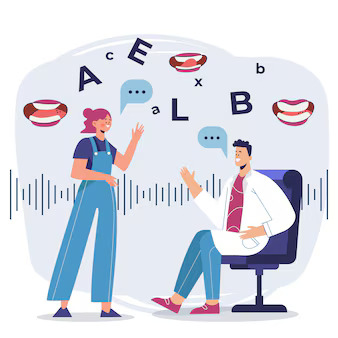
A communication disorders is an umbrella term for any condition that affects someone’s ability to communicate effectively. This can involve difficulties with understanding or using spoken language, speech production, or nonverbal communication like gestures or facial expressions. Communication disorders can range in severity from mild to profound and can be present from birth (developmental) or acquired later in life (due to stroke, brain injury, etc.).
What is an Example Communication disorder
An example of a communication disorders is stuttering, where individuals experience disruptions in the fluency of speech. This can manifest as repetitions of sounds, syllables, or words, prolonged sounds, or blocks where speech is temporarily halted. The intensity of stuttering might vary, and it can be accompanied by tension or worry in the body. It can impact social interactions, academic performance, and self-confidence.
Exploring the Causes of Communication Disorders?
Communication disorders can affect emotional well-being and social interactions “Online therapist india” offers support.
-
Genetic Factors: Family history of communication disorders can increase the likelihood of similar issues.
-
Neurological Conditions: Disorders such as autism spectrum disorder, cerebral palsy, and brain injuries can impact communication abilities.
-
Developmental Delays: Delays in speech and language development can result in communication disorders.
-
Hearing Loss: Impaired hearing can affect the ability to learn and use spoken language.
-
Intellectual Disabilities: Cognitive impairments can hinder language acquisition and use.
-
Prenatal Factors: Exposure to toxins, infections, or malnutrition during pregnancy can affect brain development.
-
Birth Complications: Conditions such as premature birth or low birth weight can increase the risk of communication disorders.
-
Environmental Factors: Limited exposure to language and social interaction in early childhood can delay communication skills.
-
Traumatic Brain Injury: Injuries to the brain can disrupt language and speech functions.
-
Chronic Ear Infections: Repeated ear infections can lead to temporary or permanent hearing loss, impacting speech development.
-
Emotional and Psychological Factors: Trauma, neglect, or severe emotional stress can affect a child’s ability to communicate.
-
Physical Impairments: Conditions like cleft palate or other structural abnormalities can interfere with speech production.
-
Learning Disabilities: Dyslexia and other learning disorders can impact language processing and communication.
-
Autism Spectrum Disorder: Children with autism often experience difficulties with verbal and non-verbal communication.
-
Selective Mutism: A psychological disorder where a child is unable to speak in certain social situations, despite being able to speak normally in others.
-
Exposure to Multiple Languages: While not a disorder, growing up in a multilingual environment can sometimes delay language development as the child navigates learning multiple languages simultaneously.
“Online therapy” sessions with a mental health professional can help individuals address communication disorders and develop coping strategies.
The Impact of Communication Disorders on Mental Health and Well-Being
The impact of communication disorders on mental health can be significant, affecting individuals in various ways:
-
Frustration and Stress: Difficulty communicating can lead to frustration and stress, impacting overall well-being.
-
Low Self-Esteem: Struggles with communication may result in feelings of inadequacy and low self-esteem.
-
Social Isolation: Communication difficulties can lead to social withdrawal and isolation due to challenges in connecting with others.
-
Anxiety and Depression: Persistent difficulties in communication can contribute to anxiety and depression.
-
Feelings of Alienation: Individuals may feel misunderstood or alienated, leading to feelings of loneliness and isolation.
-
Academic and Professional Challenges: Communication disorders can hinder academic and career success, leading to additional stress and anxiety.
-
Limited Opportunities: Limited communication abilities may restrict participation in social, educational, and vocational activities.
-
Relationship Strain: Challenges in communication can strain relationships with family, friends, and colleagues.
-
Bullying and Stigmatization: Individuals with communication disorders may be vulnerable to bullying and stigma, exacerbating mental health issues.
-
Emotional Regulation Difficulties: Difficulty expressing emotions verbally can lead to challenges in emotional regulation.
-
Impaired Coping Skills: Limited communication abilities may hinder effective coping strategies for managing stress and emotions.
-
Identity Challenges: Communication disorders can impact one’s sense of identity and self-concept, leading to identity crises or confusion.
-
Negative Self-Talk: Internalized negative beliefs about one’s communication abilities can contribute to negative self-talk and self-criticism.
-
Avoidance Behaviors: Avoidance of social situations or speaking engagements due to communication difficulties can perpetuate anxiety and isolation.
-
Interpersonal Conflict: Miscommunications or misunderstandings may lead to interpersonal conflicts, further impacting mental health.
-
Barriers to Accessing Support: Communication disorders may act as barriers to accessing mental health support and resources, exacerbating mental health challenges.
Recognizing and addressing the impact of communication disorders on mental health is crucial for promoting holistic well-being and improving the quality of life for individuals affected by these conditions.








